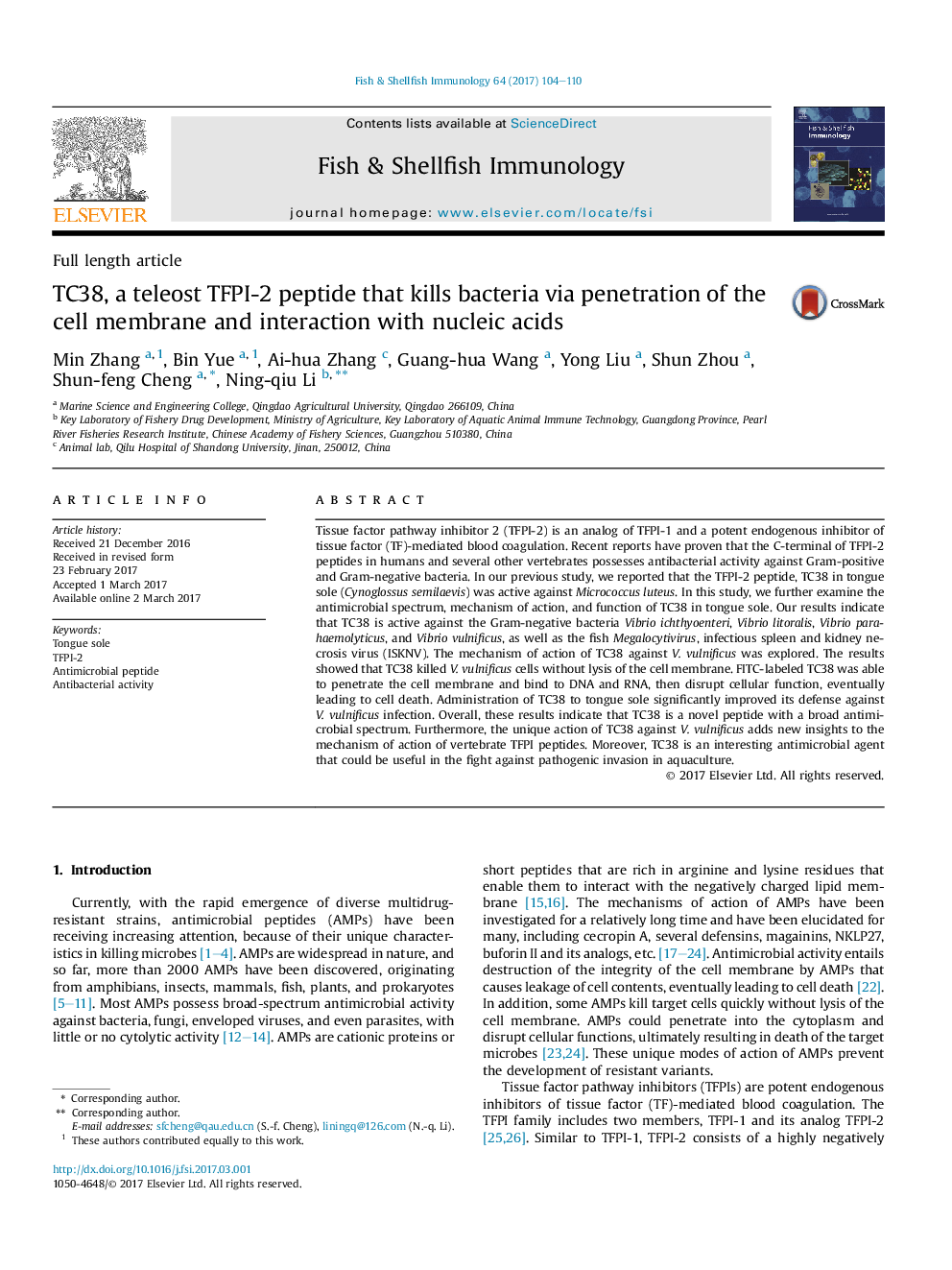| Article ID | Journal | Published Year | Pages | File Type |
|---|---|---|---|---|
| 5540504 | Fish & Shellfish Immunology | 2017 | 7 Pages |
â¢A tongue sole TFPI-2 peptide TC38 was bactericidal against four Vibrio species.â¢TC38 displayed antiviral activity against infectious spleen and kidney necrosis virus.â¢TC38 killed the cells of V. vulnificus without lysing the cell membrane.â¢TC38 could penetrate the cell membrane and bind to DNA and RNA, then disrupt the cellular function.â¢TC38 could inhibit bacterial invasion in tongue sole.
Tissue factor pathway inhibitor 2 (TFPI-2) is an analog of TFPI-1 and a potent endogenous inhibitor of tissue factor (TF)-mediated blood coagulation. Recent reports have proven that the C-terminal of TFPI-2 peptides in humans and several other vertebrates possesses antibacterial activity against Gram-positive and Gram-negative bacteria. In our previous study, we reported that the TFPI-2 peptide, TC38 in tongue sole (Cynoglossus semilaevis) was active against Micrococcus luteus. In this study, we further examine the antimicrobial spectrum, mechanism of action, and function of TC38 in tongue sole. Our results indicate that TC38 is active against the Gram-negative bacteria Vibrio ichthyoenteri, Vibrio litoralis, Vibrio parahaemolyticus, and Vibrio vulnificus, as well as the fish Megalocytivirus, infectious spleen and kidney necrosis virus (ISKNV). The mechanism of action of TC38 against V. vulnificus was explored. The results showed that TC38 killed V. vulnificus cells without lysis of the cell membrane. FITC-labeled TC38 was able to penetrate the cell membrane and bind to DNA and RNA, then disrupt cellular function, eventually leading to cell death. Administration of TC38 to tongue sole significantly improved its defense against V. vulnificus infection. Overall, these results indicate that TC38 is a novel peptide with a broad antimicrobial spectrum. Furthermore, the unique action of TC38 against V. vulnificus adds new insights to the mechanism of action of vertebrate TFPI peptides. Moreover, TC38 is an interesting antimicrobial agent that could be useful in the fight against pathogenic invasion in aquaculture.
